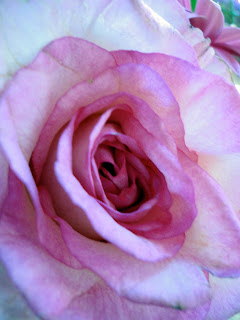Ella asks this question while "sitting here with sunlight glinting among the ruby-hearted lilies...with sunlight filtering through the boughs above me." I picture this scene in her quirky wooden cottage in Oceano, California surrounded by eucalyptus trees and the sound of the sea weaving through the air like a spell.
 |
| Image by Denise Sallee. All Rights Reserved, 2020. |
She goes on to answer her question. "I think that I keep my first conscious wish: to see beauty always with keener perception and subtler understanding. I have wished to serve beauty as writer, gardener and citizen—though I have fallen far short of the wish."
The first time I read the poem by John Keats Ode on a Grecian Urn, I was in my early twenties and hungry for a world I knew must exist but had yet to discover. He spoke of "wild ecstasy" and those words certainly spoke to me. And then that final stanza that haunts so many:
O Attic shape! Fair attitude! with brede
Of marble men and maidens overwrought,
With forest branches and the trodden weed;
Thou, silent form, dost tease us out of thought
As doth eternity: Cold Pastoral!
When old age shall this generation waste,
Thou shalt remain, in midst of other woe
Than ours, a friend to man, to whom thou say'st,
"Beauty is truth, truth beauty,—that is all
Ye know on earth, and all ye need to know."
Ella Young was a romantic and she was a warrior. Do her astral planets struggle within her as my own do within me?
And she continues her musings: "Beauty is like flame—it lives by escaping: but where it touches one, like flame it leaves a mark. Burnt into my mind is the image of the first rose that as a child I really saw. At that moment, that epoch of consciousness, rose bush, garden—the whole cosmos—disappeared : only the rose remained effulgent and heart-filling—only the rose remains in my memory."
 |
| Image by Denise Sallee. All Rights Reserved, 2020 |
She gives examples of what she calls "the poor image of Beauty" transient objects and moments. But, she announces "the sun remains! Reaching out toward this beauty—conceived at once as formless and having every form, understanding it to be approached as much through sorrow as though joy one apprehends the fringe of it as an ecstasy, lifting mind, body and soul beyond the trammeled existence we mistakenly call life."
Do I hear in Ella Young's words echoes from an earlier time and an earlier poet?
"Beauty is truth, truth beauty,—that is all
Ye know on earth, and all ye need to know."






